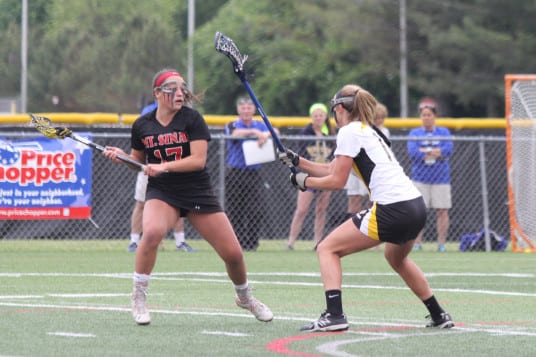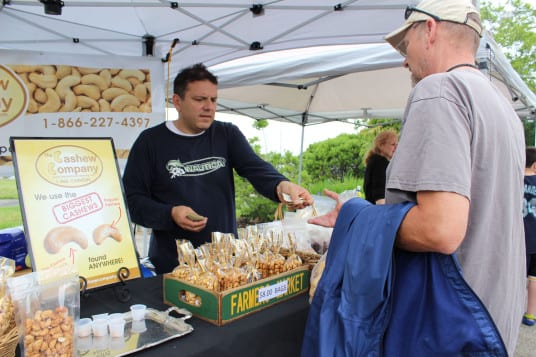
By Bill Landon
Mount Sinai scored three unanswered runs to lead 3-2 by the fifth inning, but a one-run lead wouldn’t be nearly enough as Clarke exploded in the final two innings under the Friday night lights at St. Joseph’s college, scoring nine more runs to claim the Long Island Championship Class A softball title, 11-4.
“This is the best softball team Mount Sinai has ever had,” Mount Sinai head coach Tom Tilton said. “They won the conference, they won the league and they won the county championship; something that has never been done before.”
The Clarke bats cracked first as the team scored two runs in the opening inning, but the Mustangs answered back in the bottom of the second after senior Emily Solomos drew a walk, and senior Julia Gallo hit a single up the middle to represent the tying run. With two outs, senior Jamie Parente’s bat spoke next with a long shot to left center field for a stand up double to bring home Solomos. With runners on second and third, Clarke miscued and on a wild pitch, Gallo crossed the plate to tie the game, 2-2.
Mount Sinai senior Jessica Parente led off in the bottom of the third with a single, and with a healthy lead off the bag, she drew a pick-off attempt from the mound. With an overthrow to first, she advanced to second base, and ran over to third on another passed ball at the plate, but the Mustangs’ first lead of the game would have to wait, as Parente was left stranded.

In the top of the fifth inning, with one out and runners at the corners, Clarke attempted a squeeze play, but the Mustangs didn’t fall for the stolen-base attempt, and cleanly picked off the runners on their way to second and home, to retire the side.
Mount Sinai senior pitcher Cassandra Wilson smacked a lead-off single to start the bottom of the fifth inning. She put herself into scoring position by stealing second, and with freshman Love Drumgole at the plate with one out, Drumgole ripped one deep down the right sideline to drive in Wilson and edge ahead, 3-2, for the team’s first lead of the game.
Sophomore Angela Bukofsky answered next when she smacked a double to right center field, but Clarke pitched its way out of the inning to stop the rally.
Mount Sinai’s lead was short-lived, and in the top of the sixth, Clarke ripped a two-run home run 220 feet over the center field fence, to retake the lead. After a double, Clarke loaded the bases and plated two more runners by the end of the inning, to jump out to a 6-3 advantage.
Mount Sinai went scoreless in the bottom of the sixth, and took to the field for the final inning. The Mustangs’ opponent put together a five-run rally to blow the game open, 11-3, and give Mount Sinai a deficit that was difficult to overcome.
The Mustangs managed one final run in their last at-bat, when Bukofsky drove in Drumgole to trail 11-4, but it was too little too late.
“The senior leadership has been fantastic all year long and I’m proud of them,” Tilton said of his team. “They didn’t have their best game tonight, but we were right there with them through five innings. They gave it their best shot and that’s all you can ask for.”









































